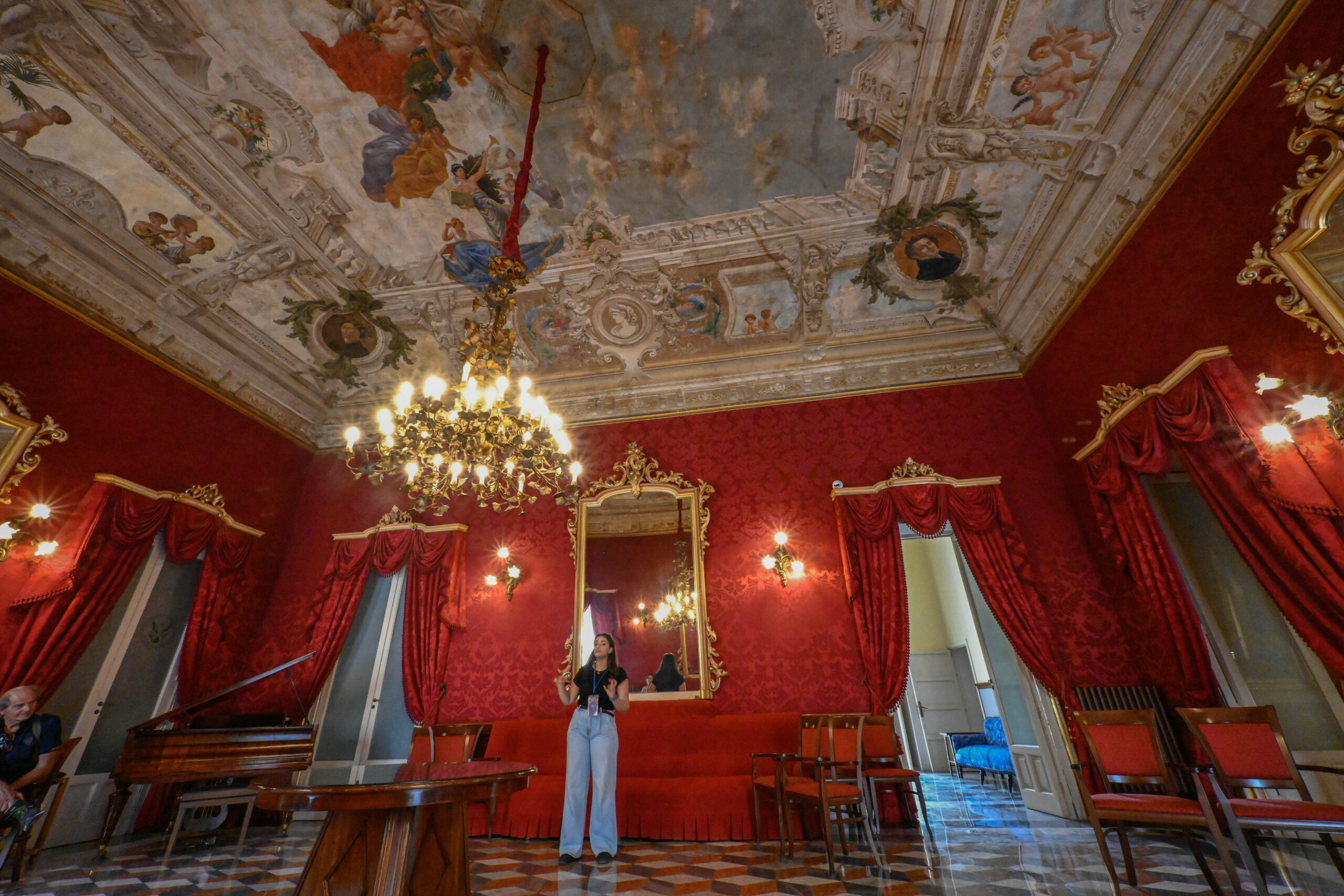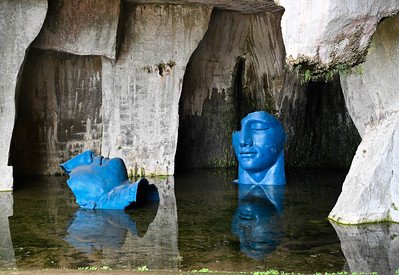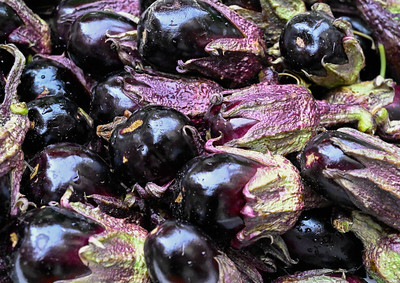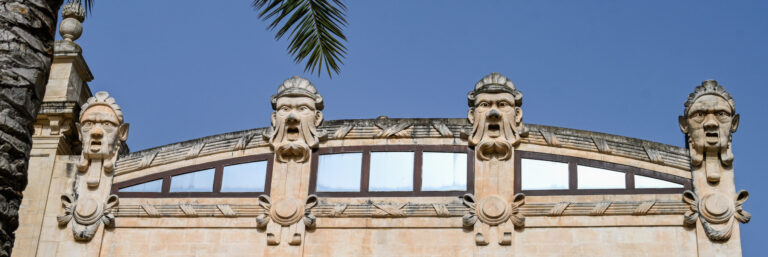Viaggio in Sicilia / 6: 19 giugno 2024 – mercoledì
Our plan for June 19 was to see Ragusa. We ended up weaving free-roaming sightseeing around a 12-noon guided tour, Ragusa 1860, and a 5pm visit to the Tenuta Bastonaca in Vittoria. The net result was that we ended up not seeing the cathedral and some other churches on the inside, but we were delighted by what we managed to see and do, especially since, in general, and with notable exceptions, Sicilian churches impress on the outside more than on the inside. A matter of personal taste.
So after our exceptional breakfast on the terrace at the Terra del Sole BnB –I underscore sole– we headed out to immerse ourselves in the baroque splendor of the Iblian wonderland. Intending to follow Rick Steves’s itinerary, we hiked to the eastern end of the city, to the beautiful public gardens, and were sidetracked by a small church, the chiesa dei Cappuccini, that is, by its extraordinary altarpiece, monstrance, and paintings by the Sicilian baroque-era artist Pietro Novelli. The “Trittico dell’Assunzione della Vergine” forms the church’s altarpiece and, along with the monstrance, is framed by the most beautiful combination of precious woods –cherry, ebony, mahogany, oak, I believe) with inlay of straw, materia povera intended to reflect the light in imitation of gold. The quality of the paintings stunned us. They seem to reflect the influence of Caravaggio. Our long conversation with the attendant was yet another reminder of the great pleasure we derive from unexpected discoveries of this sort, that mark our journeys and spark spontaneous and meaningful conversation with locals. These moments unfold for us intermittently, and with remarkable frequency in Italy, as we travel, giving unique value to the experience.
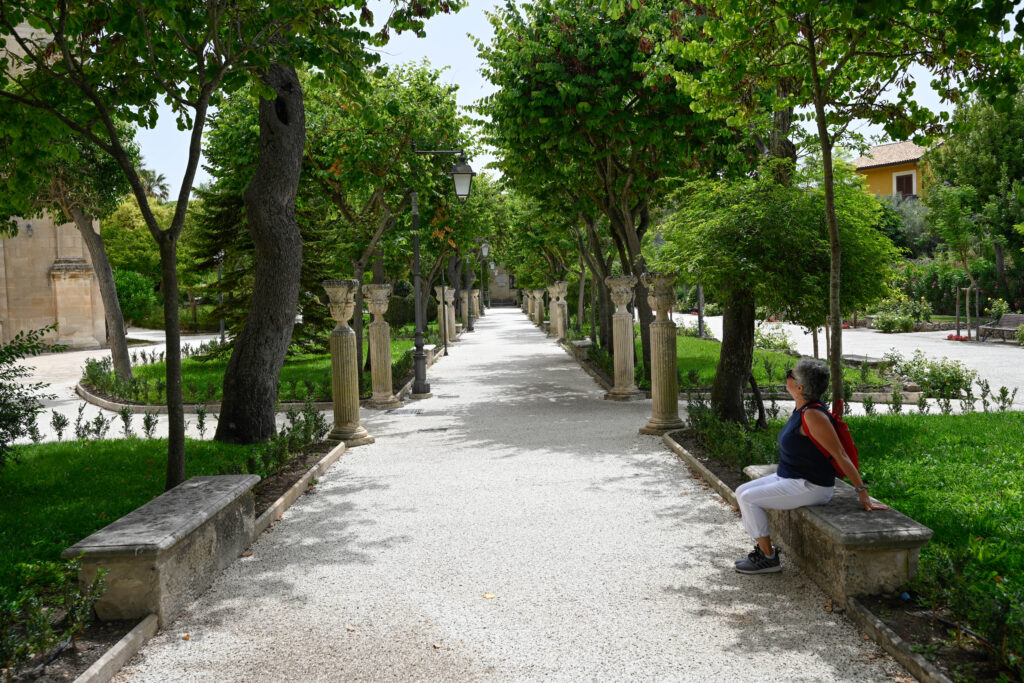
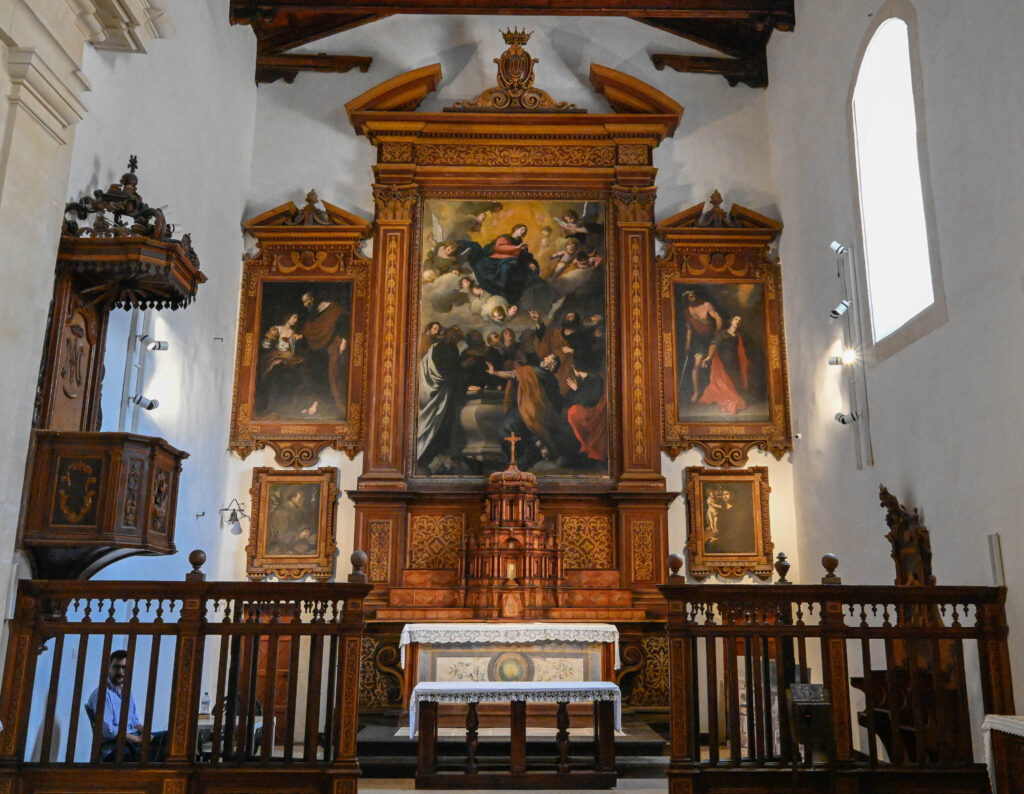
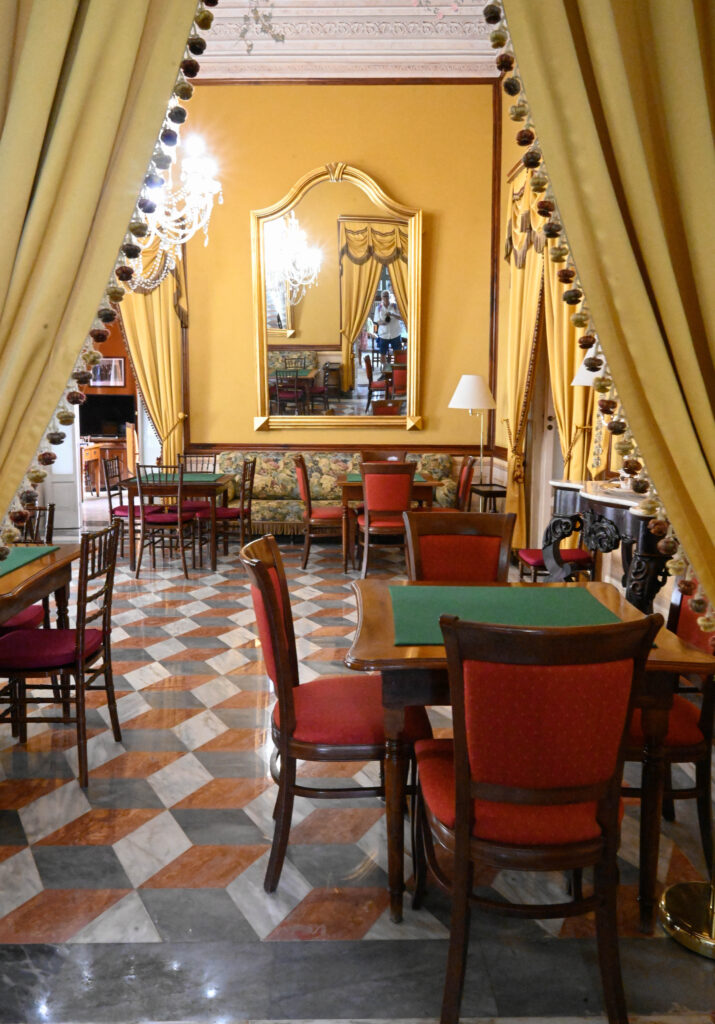
With the little time left before our 12-noon appointment we strolled through the gardens and around the heart of the old city before joining the tour at the Circolo della Conversazione. Such a delightfully symbolic name for what resembles a conventionally European place, Spain’s casinos of the type featured in Clarín’s La Regenta. Instead of highlighting the pretext –game, cards, gambling, billiards– Italians cut right to the chase: community cohering conversation. The image of locals sitting placidly on the porch of the building –and at other entrances to other buildings in Ragusa– whiling the day away in what seemed to be lazy, meandering conversation… these images were such a wonderful counterpoint to an equally wonderful tour of the building’s interior, redolent of the 19th century gilded-age world it once hosted and brought into vivid life by our vivacious and smart young guide. Of the various details mentioned, we were most struck by the symbolism of the color yellow –pettegolezzi, gossip, or perhaps just idle chatter– and by the decision to repaint certain rooms in this color. Time to think of changing the color of our kitchen into some muted strain of yellow… maybe with a touch of gray, for discretion and humility!
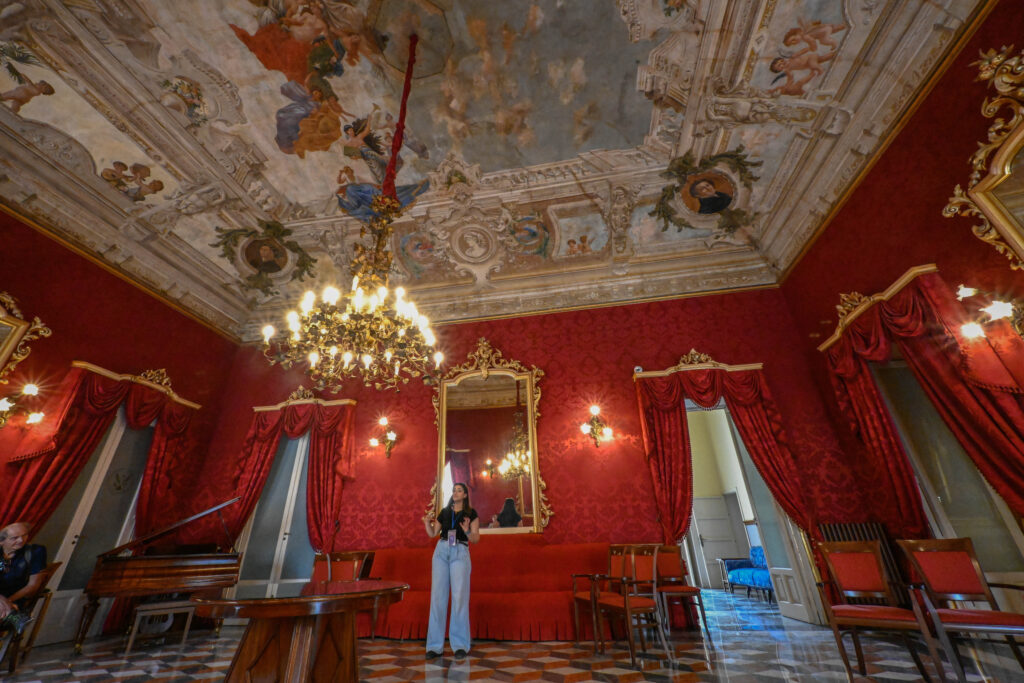
After admiring the mirrors, the chandeliers, the curtains, floors, ceilings, and furniture, the salons, billiard room, kitchen, and garden, we moved on to the unique artisan workshop, Cinabro Carrettieri – Bottega d’arte, where Damiano Rotella explained and Biagio Castilletti demonstrated how they keep alive the ancient craft of the Sicilian horse-drawn/fancifully-painted carriage. The 3-4 room workshop was chock full of tools, workstations, materials and products that offer visual testimony to an ancient yet very much living tradition. While Damiano spoke, Biagio cut, sawed, planed, filed, and nailed, showing how the various parts of the carts come together and how the various figures drawn from the popular Sicilian puppet traditions are incorporated. The different protagonists of the Arthurian legends, spawned by Ariosto and Cervantes in the 16th and 17th centuries –Angelica, Rinaldo (Orlando), Medoro– spring to life in the magical cavernous Geppetto-like workshop thanks to the passionate dedication of this humble servants of popular culture. Shades, moreover, of the ancient carros de Tespis, the wagons that ancient Greek Thespians would use for taking their companies on tour throughout the countryside. We saw two puppet shows in Sicily, one in Siracusa and another in Palermo, and saw at least 3 other puppet workshops and had a meaningful conversation with yet another puppeteer, Franco Cuticchio, while strolling through the old neighborhoods of Palermo. Our experience at Cinabro’s was thus the first of a string of encounters that exposed us to the noble efforts of so many modern-day Sicilian Thespians striving to sustain this beautiful pre-industrial tradition in this post-industrial/digital age of ours. It is truly troubling to see how fragile these traditions have become, how insecure these artists feel regarding an enterprise –generations-old family enterprises, in many cases– that they feel passionate about, that identifies them. Storm clouds over a magical yet fragile reality.
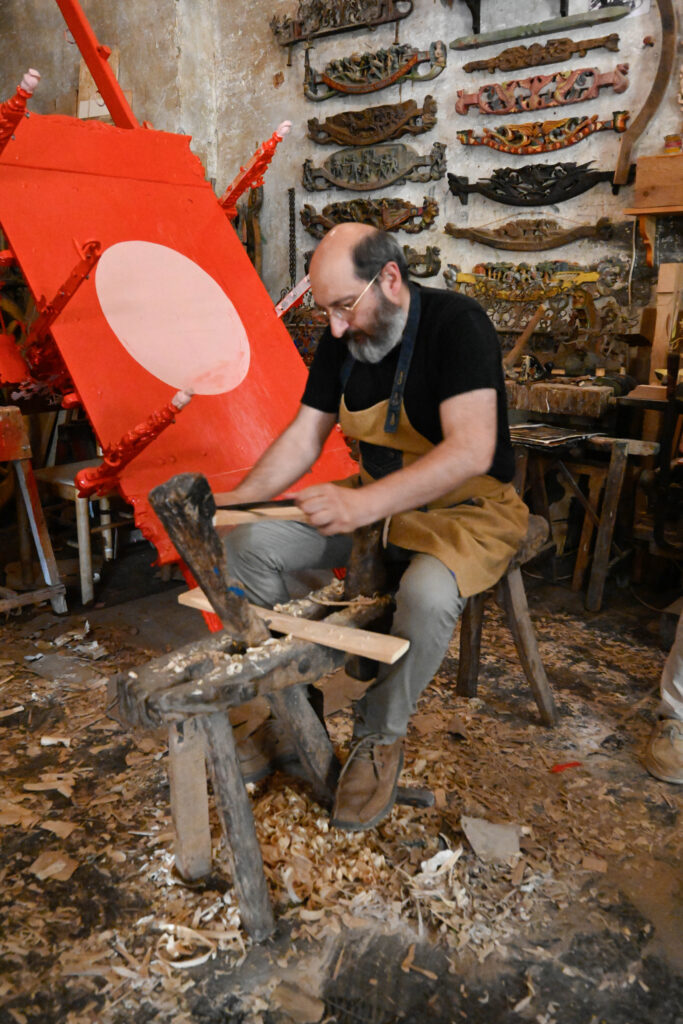
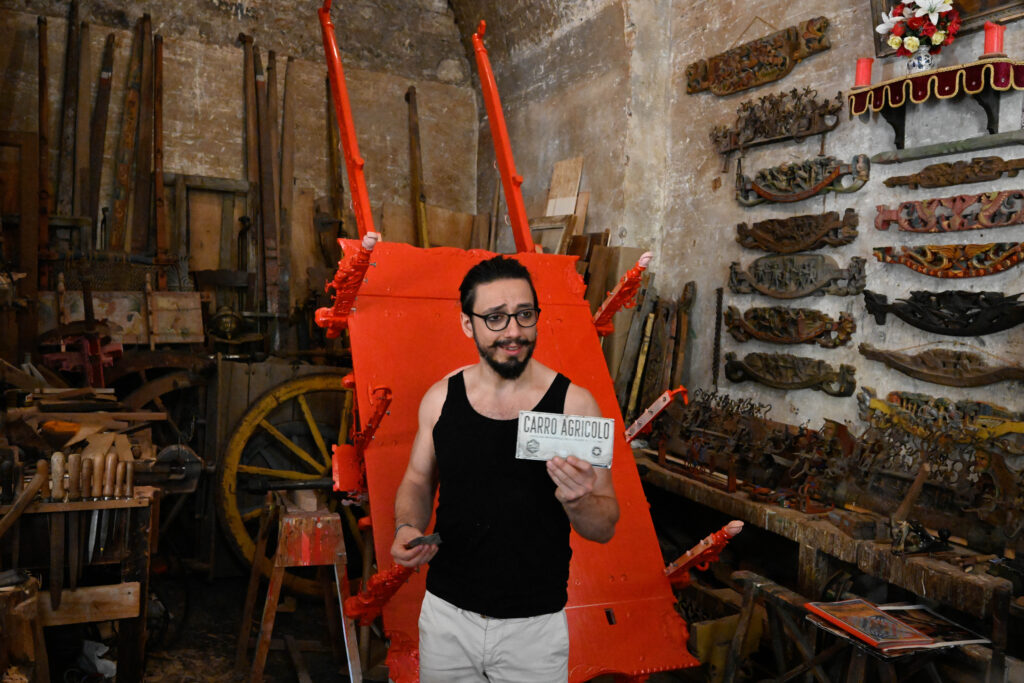
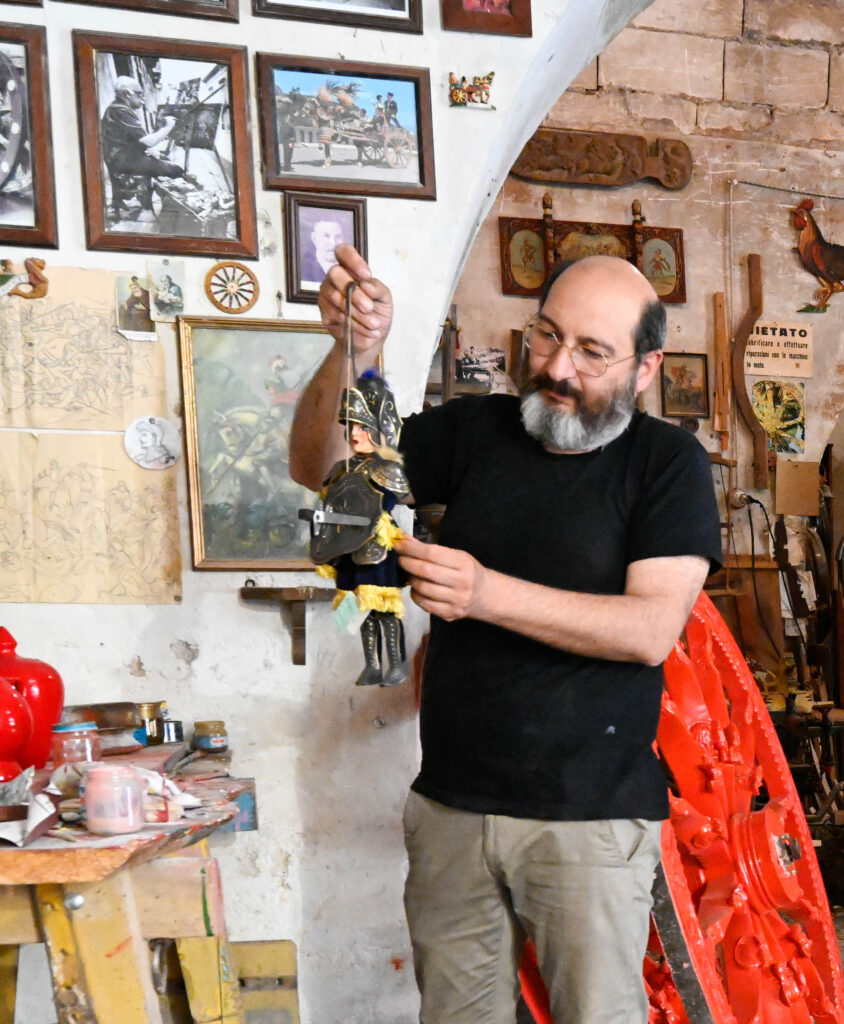
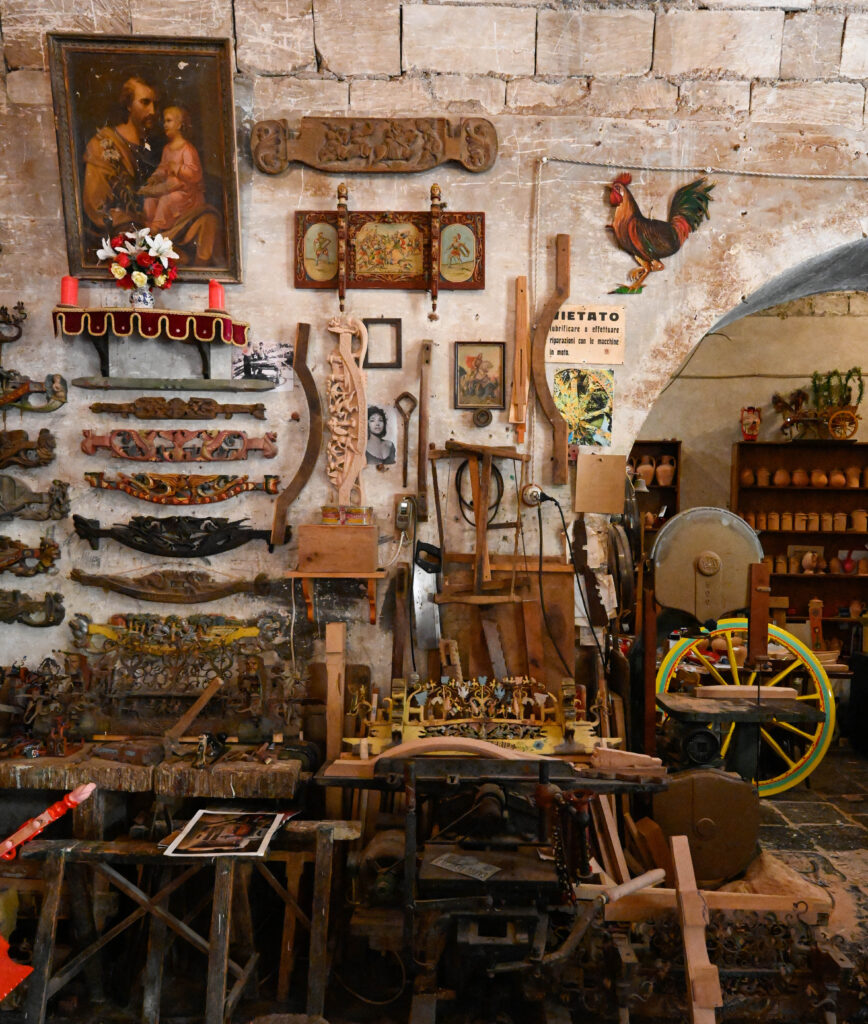
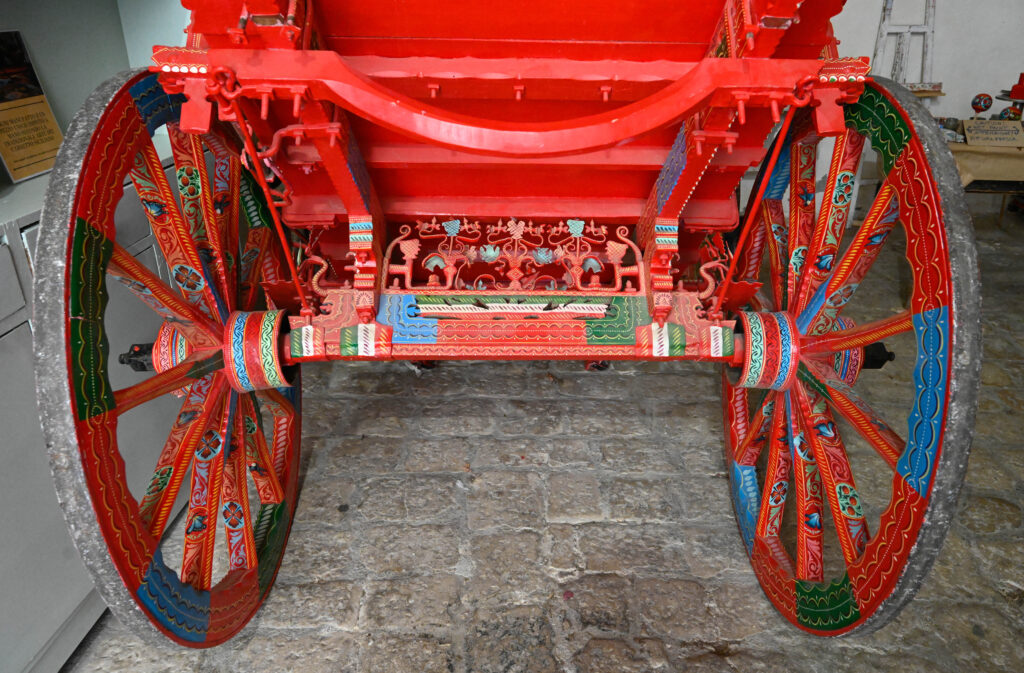
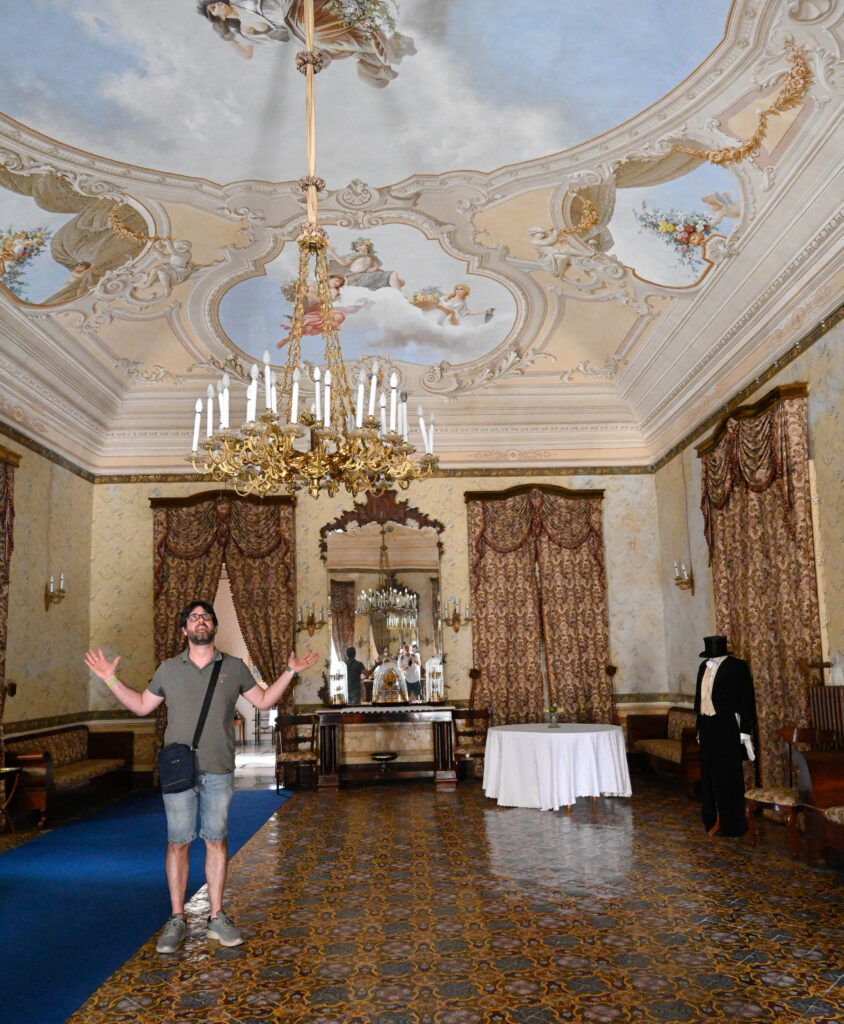
We left Cinabro promising to return after lunch to purchase a pair of puppets (Rinaldo e Angelica are living happily everafter in Middletown, Connecticut!) and proceeded on to the Palazzo Arezzo di Trifiletti. We were guided through this palace by a youngish member of the clan, whose roots go back to the arrival of his ancestors (two brothers) in Ragusa at the time of Ruggero II (early 12th century). This palace seemed far less glamorous than the Circolo across the street –more worn, less aggiornato in its furniture and decoration– but in some sense it was all the more interesting for this. Even the guide seemed somehow out of place, maybe a bit anachronistic: a post-Beatles t-shirt and shorts clad descendant of the 19th century aristocracy displaying it all with an aura of indifference, maybe oblivious to decay of all that was presumably noteworthy. “Desprecia cuanto ignora,” as Antonio Machado would have it:
Castilla miserable, ayer dominadora,
envuelta en sus andrajos desprecia cuanto ignora. (“A orillas del Duero”)
The view out the window facing the plaza, the image of the baroque façade of San Giorgio cathedral filtered through the old and graying tule curtains, Sicily’s andrajos (tatters), somehow seems to capture the essence of the place, of how the contemporary world looks from inside this old palace.
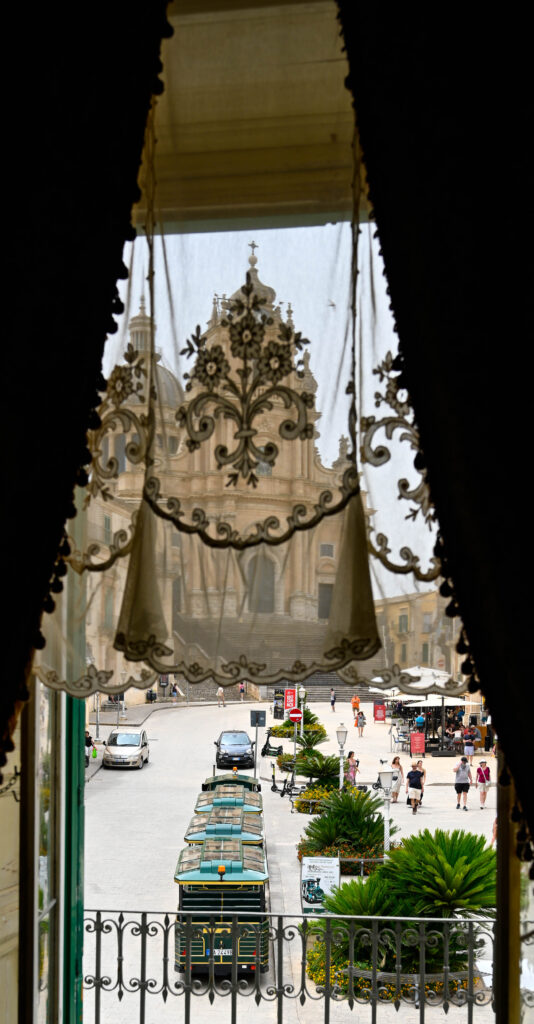
We left the palace, had a delicious salad with fresh seared tuna for lunch then headed back to the hotel and rested before driving to the Tenuta Bastonaca in Vittoria (Pedalino), where Silvana introduced us with great enthusiasm and pride to her vineyards and winery. This is an emerging enterprise with great potential. Silvana and her son were exceedingly warm. The wines we tasted were all very good: Pantelleria Bianco, Grillo and Cerasuolo di Vittoria Classico. None of them really compared with the Fina Kikè that Andrea offered us in Porto D’Empedocle, during our Agrigento Stay, however.
Upon returning to Ragusa we rested then returned to Agli Archi, where our dinner surpassed the previous night’s: ravioli stuffed with pecorino and ricotta and God knows what else! I think that the sauce had some mint. Maybe some fennel also or instead. Doesn’t much matter. Just remember the savory delight! The Sicilians combine these fresh foods in such refreshingly original ways.
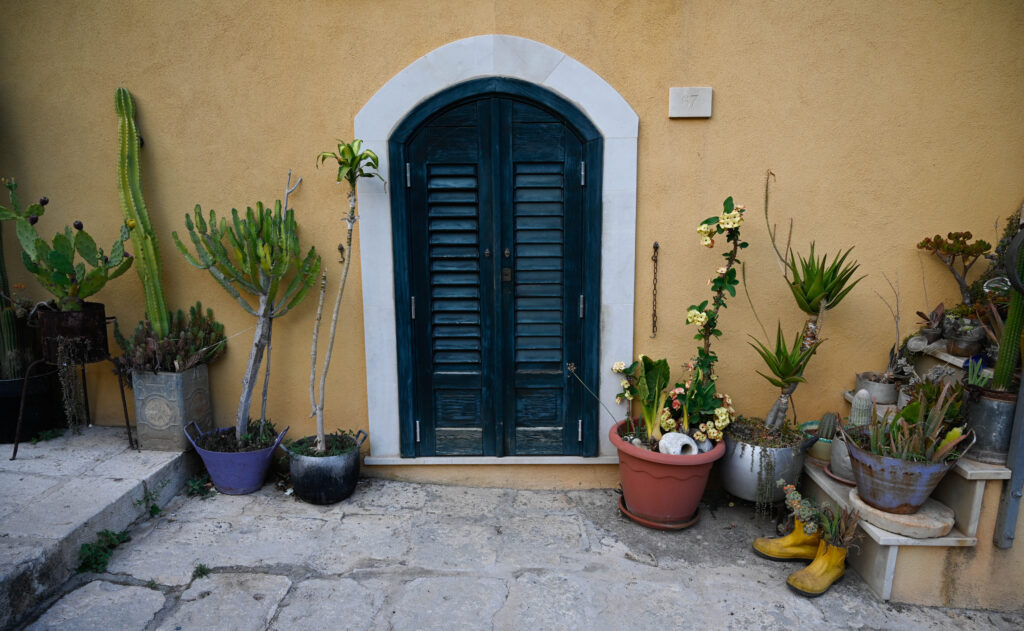
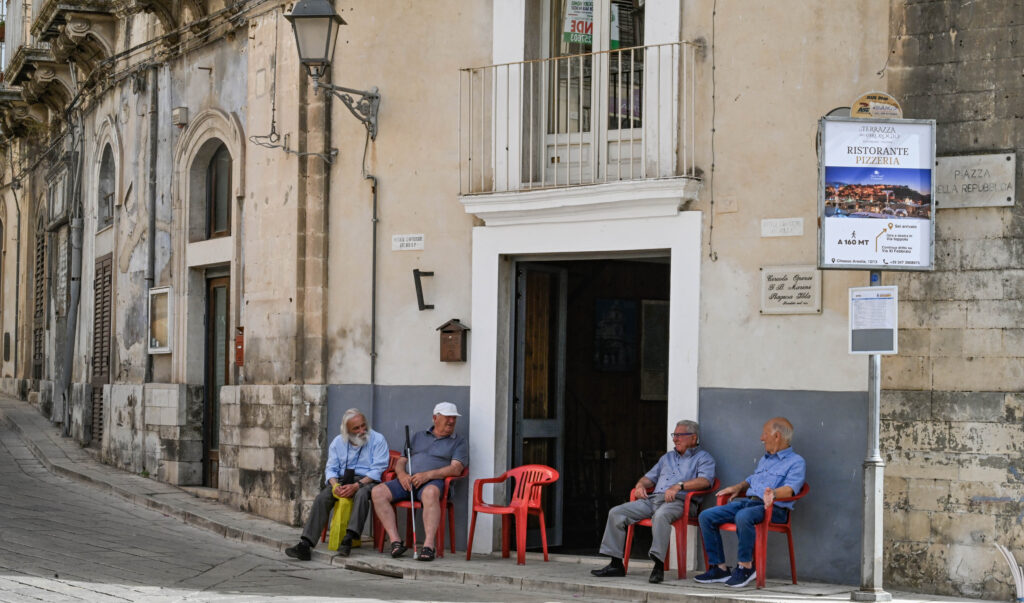
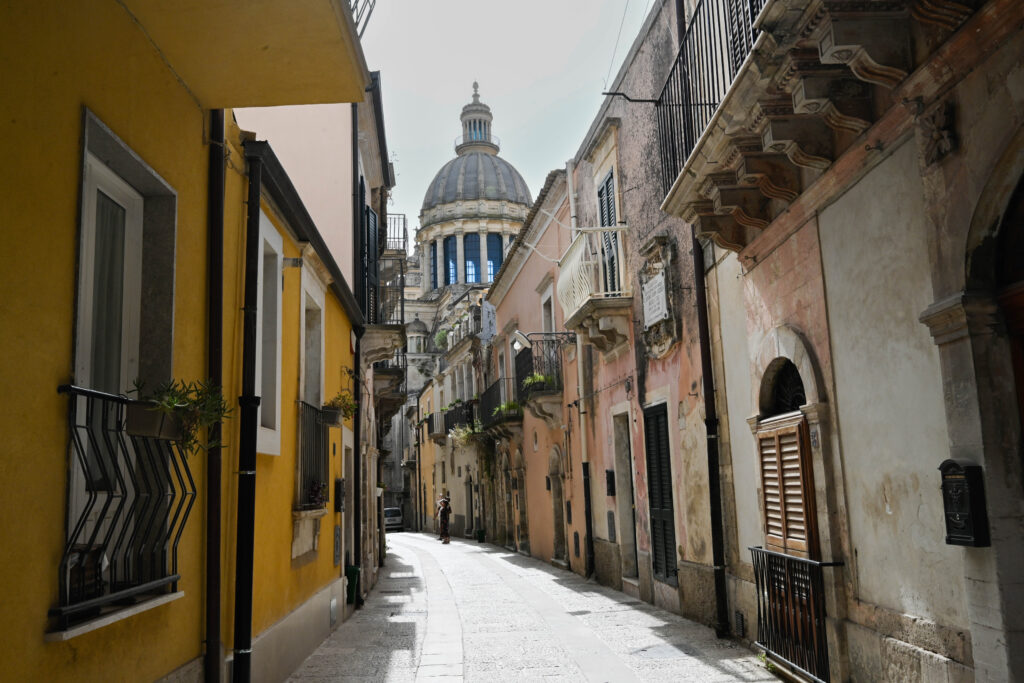
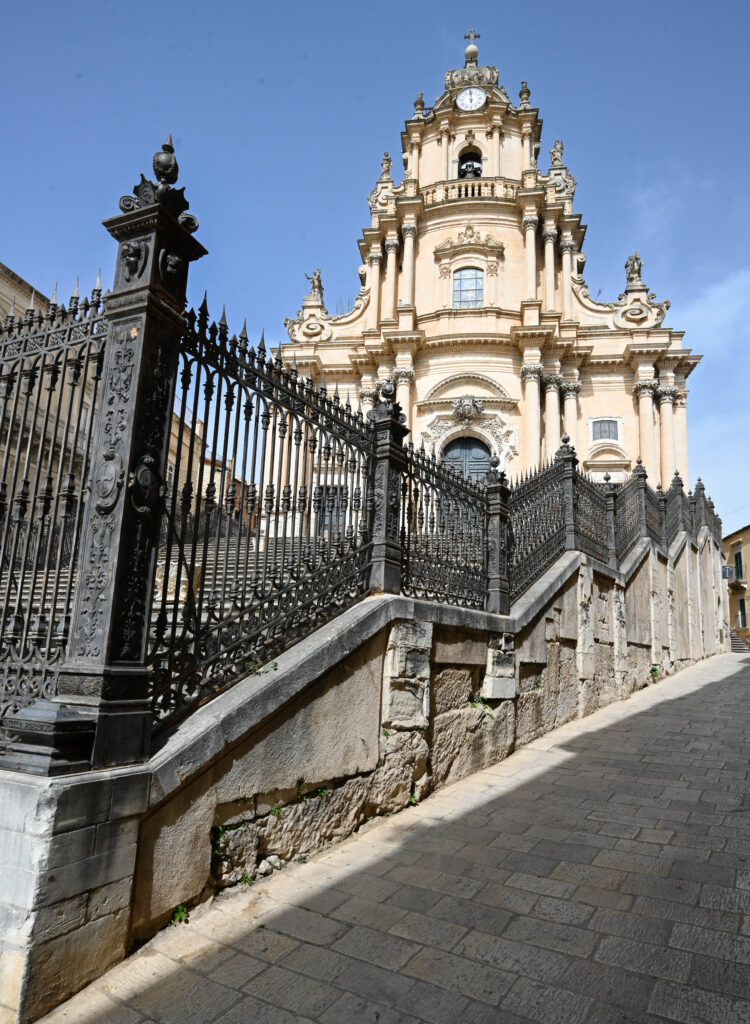
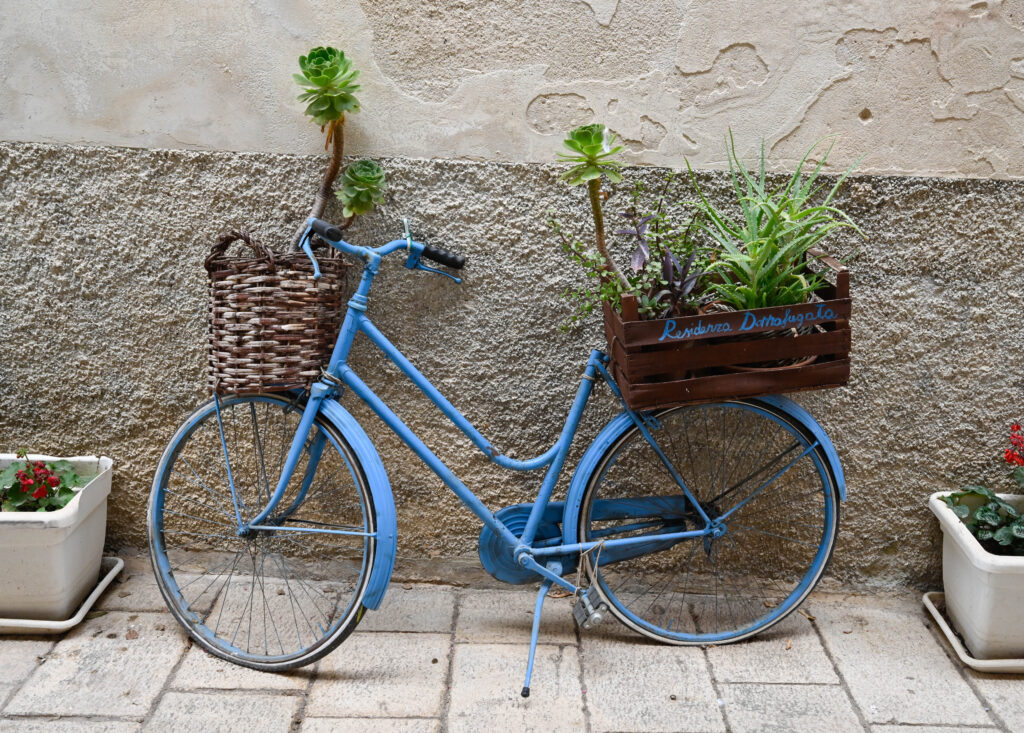
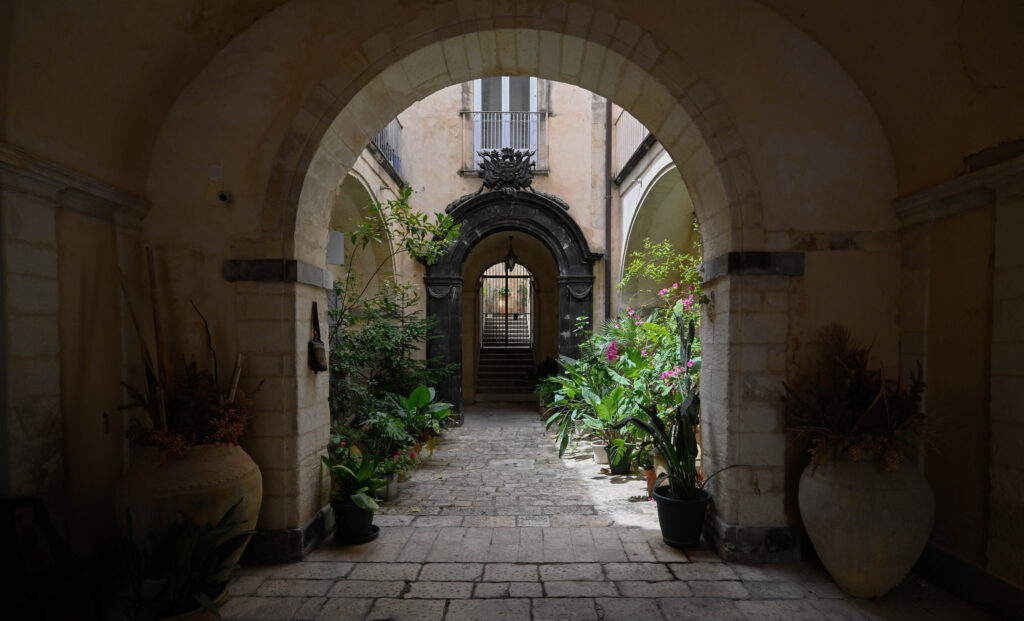
Photo album available on Flickr at: https://flic.kr/s/aHBqjChynS
